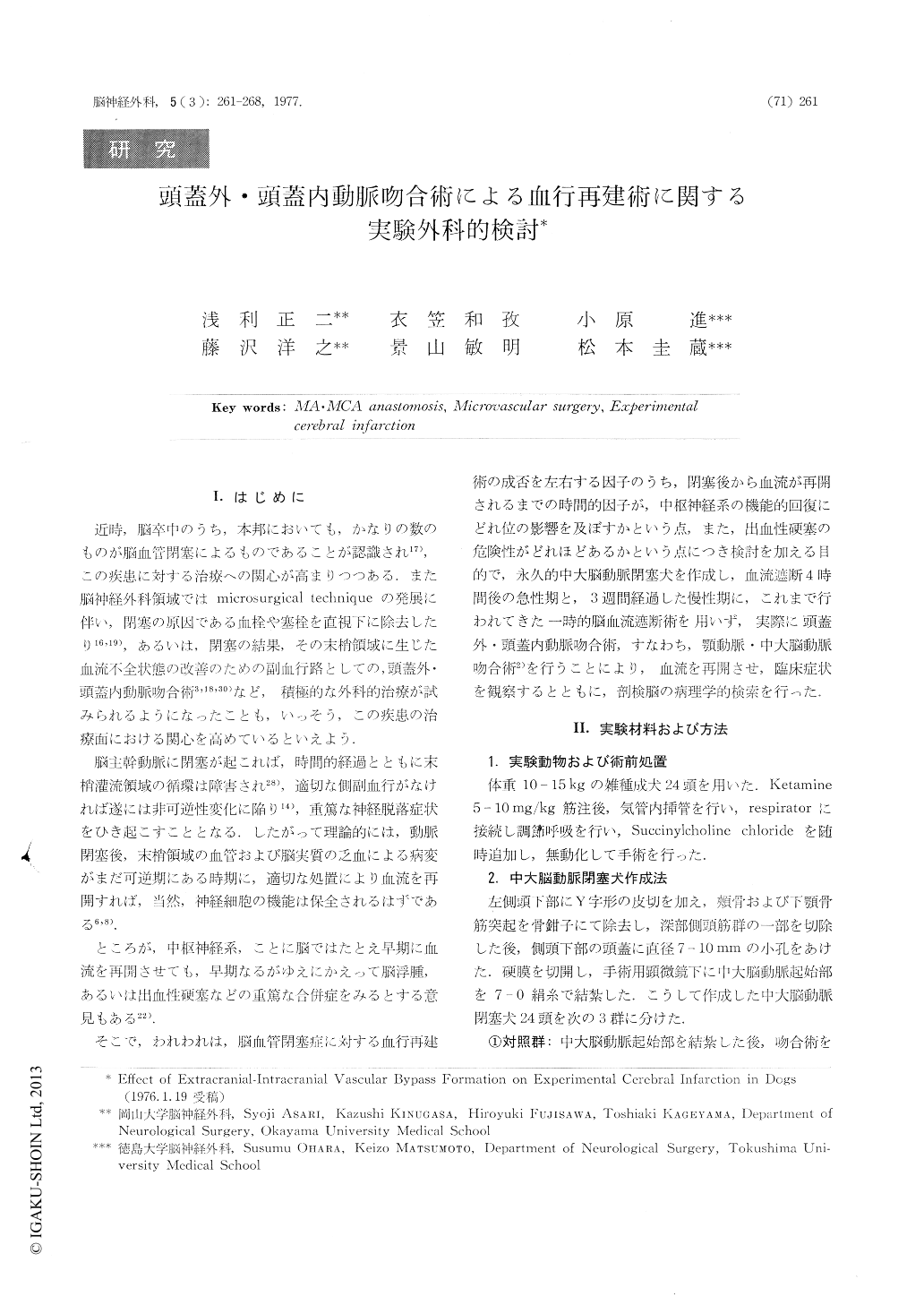Japanese
English
- 有料閲覧
- Abstract 文献概要
- 1ページ目 Look Inside
Ⅰ.はじめに
近時,脳卒中のうち,本邦においても,かなりの数のものが脳血管閉塞によるものであることが認識され17),この疾患に対する治療への関心が高まりつつある.また脳神経外科領域ではmicrosurgical techniqueの発展に伴い,閉塞の原因である血栓や塞栓を直視下に除去したり16,19),あるいは,閉塞の結果,その末梢領域に生じた血流不全状態の改善のための副血行路としての,頭蓋外・頭蓋内動脈吻合術3,18,30)など,積極的な外科的治療が試みられるようになったことも,いっそう、この疾患の治療面における関心を高めているといえよう.
脳主幹動脈に閉塞が起これば,時間的経過とともに末梢灌流領域の循環は障害され28),適切な側副血行がなければ遂には非可逆性変化に陥り14),重篤な神経脱落症状をひき起こすこととなる.したがって理論的には,動脈閉塞後,末梢領域の血管および脳実質の乏血による病変がまだ可逆期にある時期に,適切な処置により血流を再開すれば,当然,神経細胞の機能は保全されるはずである6,8).
The middle cerebral artery was occluded at its origin via subtemporal approach by microsurgical technique in 24 dogs.
In 8 of these 24 dogs, end-to-side anastomosis between the maxillary artery and a branch of the middle cerebral artery (MA・MCA anastomosis) was made 4 hours after MCA occlusion. In 5 dogs, MA・MCA anastomosis was performed under microscopic control 3 weeks after MCA occlusion. Remaining 11clogs without shunt operation were used as control animals.
All the animals were clinically observed every day until sacrifice.

Copyright © 1977, Igaku-Shoin Ltd. All rights reserved.


